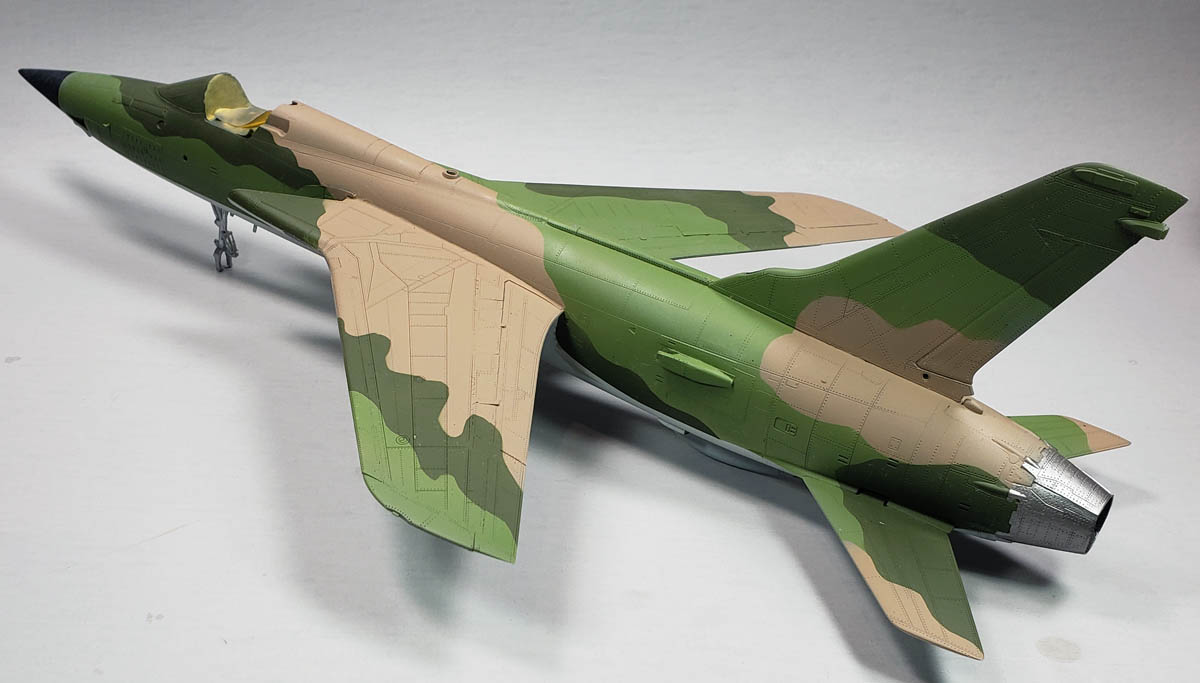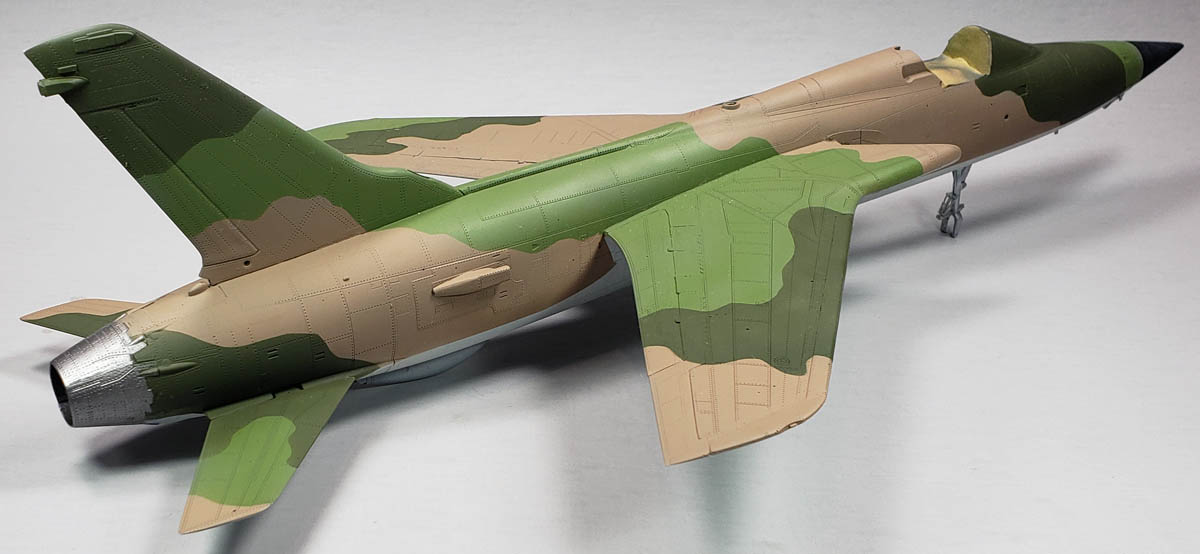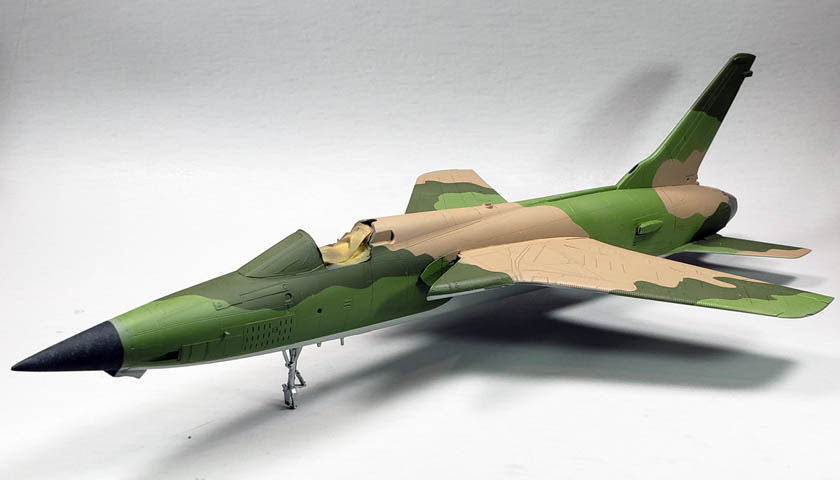I know it wasn’t my first airshow, but it was the first one I recall going to. It was in the mid-1970s. A friend’s dad worked at the local Air Force Base, and they’d invited me to come along for the annual “Open House”. The event would include static displays of virtually every aircraft in the USAF’s inventory, plus quite a few vintage World War II aircraft. To top it off, my friend’s dad worked in a building not too far from the flightline, so all of the folks who worked there were gathering for a cookout – burgers, hot dogs, and all the trimmings.
Being 10-years-old (thereabouts), and loving anything aviation and food – I was just about as excited as one could be without actually bursting.
We got there mid-morning, and immediately went out to the flight line. I’d never seen such a sight. Rows and rows and rows of airplanes, of every shape and size and color. A giant C-5 Galaxy loomed over all else. But there were also Starlifters, Hercules, Phantoms, Tomcats, and every other thing with wings that flew the skies of America. But I quickly spotted the one that had my interest at the moment.
The Thud
Shortly prior to this airshow, I’d heard the a man speak at my church. He was a member there, and my dad had taken me to a Men’s Prayer Breakfast one Saturday morning. I’d not been really excited about the prospect of leaving the house early on Saturday, and missing all those cartoons. However, the promise of all the pancakes I could eat – plus bacon and sausage – was too tempting to pass up. Dad had also mentioned some man would be talking. I didn’t care about that though. He had me at pancakes.
The men gathered in the fellowship hall at the church. I was the only kid in sight, but the grownups seemed to enjoy the fact that I knew lots about airplanes, and loved to talk about them. Most of them were veterans of one of the wars in America’s recent history, and many were retired or still active duty Air Force. Finding myself surrounded by the people who were my heroes… with of course pancakes and various pork meats… was to be in 10-year-old heaven.
After eating more food than any kid my age probably should, one man got up and gave an introduction to the day’s speaker. I’d seen the fellow around the church, and knew he was a Lieutenant Colonel in the Air Force, but other than that, he was just another face to me.
As he stood and begin to speak, though, my attention turned from pancakes to his words.
He’d been an F-105 pilot, he explained, and had flown missions over Vietnam. That instantly caught my ear. A real live fighter pilot – how cool! He described going over there, what the conditions were like, and what a typical mission might be like. Then his story took a turn I was not expecting. He began describing a particular mission, on a particular day.
It was the day he was shot down, and became a POW for the next seven years. I looked at my dad. “What’s a POW?” Dad held his finger to his mouth to signal me to be quiet. “Just listen carefully” he whispered.
Painting The Thud
After priming the model with Badger’s Stynylrez Gray primer, I began the laborious process of painting an SEA (SouthEast Asia) camo scheme. I’ve never really like modeling that paint job. While I do think it looks cool, it’s a masking nightmare. No matter what method I’ve used… tape, putty, paper, or premade masks, the whole thing is just tedious. Quite honestly it’s something I have come to more and more avoid, as I simply don’t find the process fun. (And my hand and eyesight are no longer up to freehand work of any fine degree.)
However, this model was a commission build – one of the last I’m working on. I’d taken on the task willingly, so SEA scheme it would be. The client had provided paints for the build, an Ammo of Mig set that included all four of the colors used – light gray, tan, a mid-green, and dark green.
I started by painting the undersides. I really liked the gray color. It’s very light, but not quite white. Paying heed to the instructions in an Ammo video on Youtube, I made sure to apply the color slowly, building up the layers as I went.
Now, you’d think that covering over the gray primer would not be difficult. But as I built more and more layers up, I realized just how thin the paint was going on. Coat after coat was built up. Had this been Tamiya, I’d have blasted it on, and had it in place fairly quickly.
But heeding the client’s request – and the fact that there colors were “correct” out of the bottle, I went with them. I started getting impatient, and began to apply it thicker, but immediately saw exactly what they warned of in the video: a glossy, somewhat pebbly finish began to emerge. So I backed down… and misted. Eventually, it was all on. I set it aside to dry.
On to the topside
Masking off the undersides, I thought about how I wanted to paint the uppers. Normally when I am masking a camo scheme, I go ahead and fully paint the upper surface of the model with the first color. This does two things.
One, it makes sure that I won’t have inadvertent “gaps” in between colors because I didn’t completely cover an area. Second, it provides one consistent tone for the second color to go over, which helps avoid color variations that can exist over different base coats.
Most paints i used previously – especially Tamiya – made this easy. Apply it, let it dry, mask, repeat. Easy.
However, my experience with building up the Ammo paint on the undersides made me rethink that process. With so many coats to build up, I realized it would be best to simply do a rough “freehand” of the pattern, allowing enough spillover to be built-in to make sure I’d have no lack of coverage in masking.
I began that process with the tan color. Sure enough… I misted. And misted. And misted. I never knew a neutral gray primer could be so hard to overcoat.
Now, the paint flowed nicely. It went on very smooth, and the finish was wonderful. The color, to my eye, was very close. In every way I would normally assess how much I liked a water-based acrylic paint, this stuff was spot on.
Except for that finicky application technique. I continued experimenting with how heavily I could apply the paint and still get a good finish. I finally found a point that was about the max the stuff would allow – but it was still taking quite a bit to cover everything.
Of course, doing anything while frustrated only compounds the problem.
Eventually, it was all on. Back on the shelf it went to dry overnight.
You’re Looking A Bit Green
The next color was the mid-green. I prepared for that by applying masks over the tan areas. A reference photo of a general F-105 showed one scheme, the kit instructions showed another, and the after-market decals for a specific bird showed something different from the other two. I finally settled on an amalgam that I could best describe as “inspired by real events”. But it’s not the real thing.
The masking process for that mid-green color took quite a while. Cutting tape, thoroughly de-tacking it, and getting all those strips applied took nearly two hours. With all that tape on, I began painting the mid-green.
And painting.
And painting.
Again… this is great paint in all the areas that a paint is measured by. Except (in my opinion, of course…) the one I was really dealing with. Speed of application. And because I now had two tones to deal with – the neutral gray AND the “bleedover” from the tan, it took more coats of paint to fully cover that. But as with the tan, this color two was eventually applied. Back to the shelf for some drying time.
The masking for the dark green was applied the next day. Again, this was a fairly laborious process, though I noticed I was being much more liberal in my interpretation of the scheme, and generally going for the “make it curvy” rather than “make it accurate” look. With the tape on, the painting began.
The dark green went a bit better. While it still had to be misted up in multiple – now maddening – coats, because it was fairly dark, it did cover things a bit quicker. Keep in mind that at this point I was covering three tones – gray, tan, and mid-green.
Finally, I was finished.
Then I started the unmasking. This reminded me of another reason I don’t like three color (or more) schemes. No matter how carefully you apply the paint, and no matter how carefully you detack the tape, pulling up what amounts to several feet of sticky paper from the surface of your model will most likely result in some paint lift. Not always… I’ve had instances that were lift free. But the more colors, the more tape. And the more tape, the more the percentages go up.
At first, things went well. I pulled up the tape- carefully, slowly, pulling it back on itself – and there was no lift at all. I’d removed the tape from nearly 80% of the model.
And then it happened.
The Lift
I was carefully removing the tape which covered up the tan area aft of the cockpit, right along the spine of the aircraft. Suddenly I saw the beginnings of lift. And not just paint lift. I was staring at bare plastic. Primer and paint were coming up.
Experience told me to stop and try from the other end. In a few cases, I’ve lifted the tape from the opposite site, pulled into the section that was lifting, and was able to stop it right there.
But not today.
Eventually I ended up with a strip about an inch long, and a quarter-inch wide, of bare plastic. For that, I blame neither paint nor primer. I blame myself. While Stynylrez works great, it is fairly insistent on having a very clean surface to be applied to, so that it can grip well. And I knew what that area was – exactly the point my thumb would sit whenever I picked the model up. I must have cleaned the bare plastic, but then picked it up a few times before priming. Those oils would have doomed it from the start.
Still… what good is experience if it does not inform how to recover from a disaster, minor as it was? I lightly sanded the edge of the blemish to make sure there would be no ridge. Next, I cut a mask of paper – basically a rectangle in a bit of printer paper. This would confine the paint to the area in question, protect all else around it, and I could hold it in place on the model by hand – minimizing more chance of lift.
First, I “primed” it with a tan Tamiya color, thinned with Mr. Color Leveling Thinner. This would grip the surface nicely, and make the later application of Ammo paint (hopefully) easier to apply. Just as expected, the Tamiya paint covered the area of offense in a couple of light passes. No building up. No fuss. Just a nice, flat, smooth finish.
Next came the Ammo. Mist it on… even in such a small area, I had to take a while to build it up to the point that it blended in. Finally, I had it covered. Removing the paper, I was satisfied with the result.
Sir, You Have My Attention
My pancakes long forgotten, I listened at this man’s story. I won’t recount what he told. Not because it wasn’t important. It was. It happened. It mattered. But I know the interwebs. Anything and everything will be politicized. So please set aside your thoughts on how we look back at that time. For just a moment.
I listened, carefully. He persevered. Taking the pain, the physical and mental abuse, he did the duty he’d sworn to do. For seven long years, he endured. Though his body sagged, his spirit never did. He talked of the things that sustained him. Faith, thoughts of family, and a desire to return home.
He eventually told of the day he walked on to an American Starlifter… of the cheer that went up as it lifted off the ground. Of the tears and joys and sheer emotion as it landed on a US air base.
Arriving home, he remained in the Air Force, and eventually became instrumental in teaching other service members how to survive in such harrowing conditions.
And he also had a profound effect on a certain 10-year-old that day, too.
All of this was in my mind as we headed on to the airfield. My friend and I were shouting, pointing out each of the aircraft, recognizing the squadron markings for many of them. His dad asked us “which one do you want to go see first?” Graciously, my friend looked at me, and said “You pick!“
I knew exactly which one I wanted to see. It was important to me, even at that age, to see it. “Let’s go to the F-105.” I felt, if nothing else, I could pay tribute to the man I’d listened to – and so many others – by at least going over and appreciating the airplane, and dwelling on the sacrifice of those before me. I may have been a goofy kid, but I also recognize when things mattered. And this, in my mind, mattered.
Finding The Fun
As I’ve built this Thunderchief, those times keep running through my memory. Each internal recollection brings out some new facet, long forgotten, from those days forty years ago.
This is why I model. Ultimately, despite some finicky paint, it’s fun. Even though sometimes the fun is not that kind which produces jubilation, but rather contemplation.
To get back in touch with that kid, long ago, walking up to a huge hulk of an airplane. Touching its side, climbing the steps to peer into the cockpit. And getting to talk to the pilot, standing ramrod straight in his flight suit and sunglasses, listening while he recounted his own story.
That’s fun enough.
(Thanks to Colonel James Ray, who though I have not seen you in 40 years, I still have great respect and fond memories of you sir. You likely will never know the positive influence you had on a young man that day.)











Leave a Reply